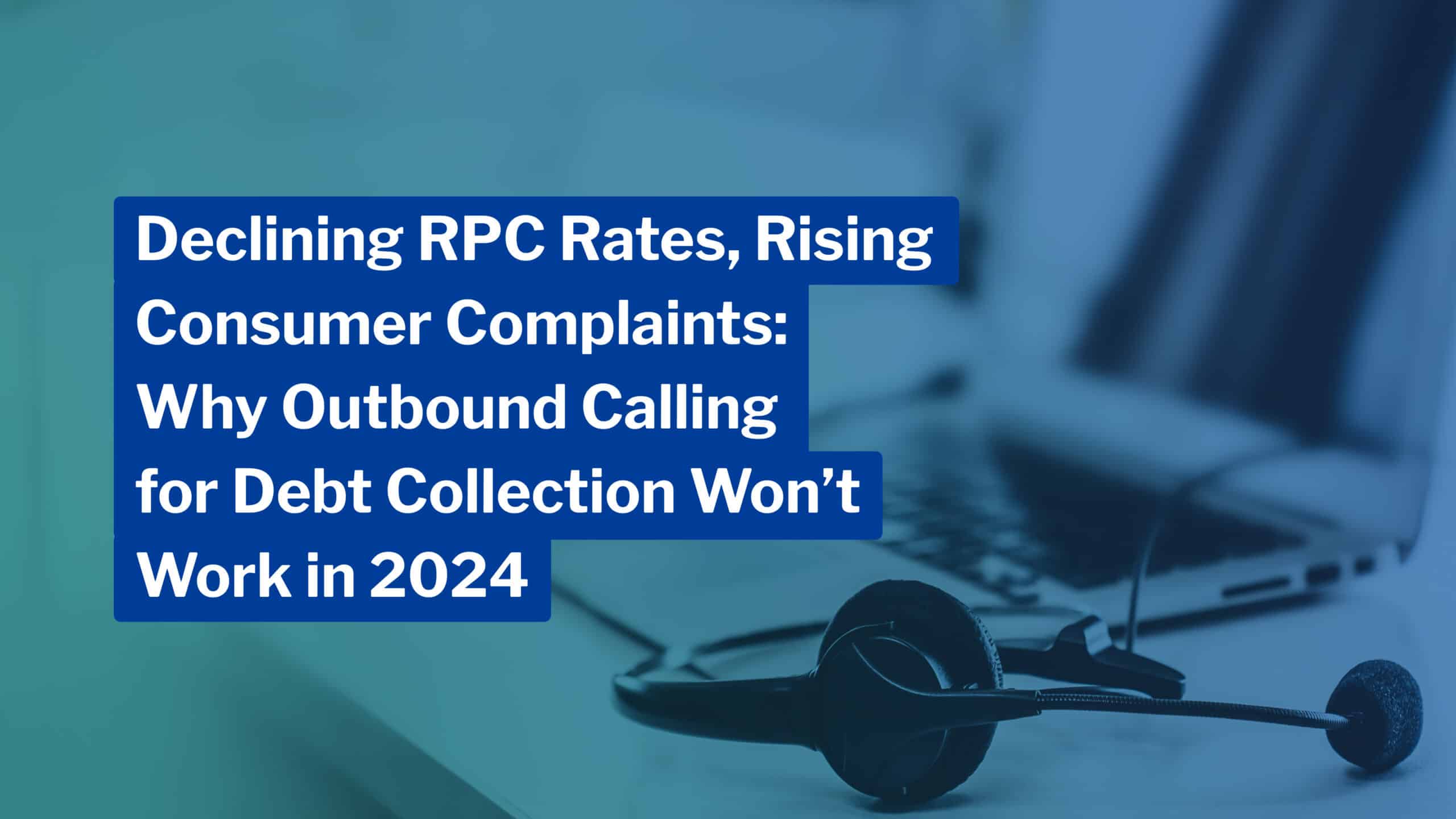
If your business plans to use outbound calling as the main mode of engaging past-due customers in 2024…good luck.
Good luck reaching the right number for the target customer.
Good luck getting them to commit to repayment over the phone.
Good luck not getting complaints.
And if the plan is only to use outbound calling…be prepared to start accepting more losses in 2024. Even if you can get the right customer on the phone, studies show 49.5% of consumers take no action after a collection call.
Let’s look at the challenges around right-party contact rates, consumer complaints, and the timely factors that make the challenges more detrimental to your business’s late-stage debt recovery.
Declining RPC Rates
The decline of right-party contact rates (RPC)—the percentage of calls in which an agent is able to connect with the target consumer—isn’t new for 2024, but its impact on debt collection is reaching new heights in the new year. RPC is considered one of the most accurate measurements for the effectiveness of an organization’s outbound calling efforts, whether internally or through a third party.
Surveys from the Association of Credit and Collections Professionals (ACA International) found that 62% of the respondents reported seeing a decrease in right-party contacts, with 78% of the respondents experiencing call-blocking and 74% having their calls mislabeled.
Call-blocking and spam-mislabeling are only part of the issue for RPC rates: government regulations, robocalls, lack of consumer trust in answering calls, and inaccurate phone data all contribute to the drop in RPC rates.
The bottom line is the declining RPC rates are negatively affecting your business’s bottom line—but that’s not the only challenge outbound dialing for debt collection faces in 2024.
Rising Consumer Complaints
As almost all other forms of financial transactions have evolved, so have consumers’ communication preferences in that arena. Nearly nine in ten Americans are now using some form of digital payments and 59.5% of consumers prefer email as their first choice for communication, but traditional call-and-collect methods still dominate in late-stage recovery efforts.
And with that in mind, it shouldn’t be surprising that consumers complain about debt collectors’ and creditors’ communication tactics used when collecting debts.
But beyond ignoring communication preferences, many consumer complaints actually equate to compliance violations.
According to the 2022 Annual Report on the Fair Debt Collection Practices Act (FDCPA), 51% of communication-related complaints were because of repeated calls. Despite the 7-in-7 Rule (debt collectors are prohibited from calling the same consumer more than seven times within seven consecutive days, unless the consumer directly gives consent to receive any additional calls), 17% of respondents of a Consumer Financial Protection Bureau (CFPB) survey said a creditor or debt collector tried contacting them eight or more times per week. Similarly, other common complaints revolve around the collector or creditor calling at inconvenient hours outside of the FDCPA presumed convenient calling hours from 8:00 a.m. to 9:00 p.m. at the consumer’s location.
But again, even if you are following the letter of the law, it doesn’t protect your brand’s reputation from consumer complaints.
Minimize These Collection Challenges with a Digital-First Approach
Between declining RPC rates, shifting consumer preferences, rising consumer complaints, and increasingly stricter compliance regulations, the once tried-and-true outbound calling methods are no longer viable in 2024.
But your business doesn’t have to resign to accepting losses once accounts hit late-stage delinquency—taking a digital-first approach negates concerns over RPC rates, catches up with evolving consumer preferences, neutralizes the cause of common consumer complaints, and smoothly navigates compliance requirements.
Kick start your 2024 recovery efforts with a digital-first consumer communication approach—learn more and get started now»»